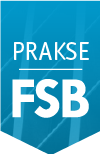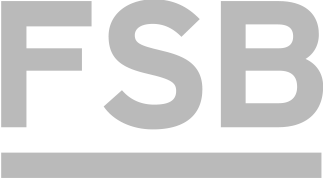International Exchange
Course details
Student Mobility > Programmes and Courses > Courses in English > Course detailsStructural Analysis
- Teaching: Completely taught in English
- ECTS: 4
- Level: Graduate
- Semester: Summer
- Prerequisites:
- Load:
Lectures Exercises Laboratory exercises Project laboratory Physical education excercises Field exercises Seminar Design exercises Practicum 30 0 15 0 0 0 0 0 - Course objectives:
- Education in strength, stability and vibration analysis of ship and offshore structures by applying contemporary methods based on the finite element technique and the well-known computer packages as Femap/NX Nastran, LS-Dyna etc.
- Student responsibilities:
- Grading and evaluation of student work over the course of instruction and at a final exam:
- Methods of monitoring quality that ensure acquisition of exit competences:
- Upon successful completion of the course, students will be able to (learning outcomes):
- Calculate and analyze the response of various structures to given loads. Solve the problem of structural strength using different analytical and numerical methods. Design and generate models of structures using the finite element method.
- Lectures
- 1. Introduction to the course. Differential equation of beam and plate bending. Derivation of beam stiffness matrix by force equilibrium method and the principle of the minimum of the total energy.
- 2. Review of the finite element method. Types of finite elements. Classification of problems. Properties of finite elements. Stiffness matrix, mass matrix, damping matrix, load vector. Constitution of equilibrium equation system.
- 3. Numerical methods for solving system of static equilibrium equations. Direct and iterative procedure with numerical examples of solving system of algebraic equation.
- 4. Numerical integration methods. Gauss method applied to finite elements. Isoparametric finite elements. C0, C1 and C2 continuity.
- 5. Eigenvalue problem. Eigenvalues and eigenvectors. Mode superposition method.
- 6. Fatigue of the material: S-N curves, basic relations, problem of stress concentration, Rules.
- 7. Non-linear static problem. Material and geometric nonlinearity.
- 8. Modelling fluid in the analysis of fluid-structure interaction (FSI) problems.
- 9. Ship hull stiffness. Effective bending and shear stiffness. Effective torsion and warping stiffness.
- 10. Numerical method for solving system of differential equations of motion in time domain. Houbolt method. Newmark method. Wilson method. Harmonic acceleration method.
- 11. Modelling of ship and offshore structures in FEM analysis.
- 12. Ship strength in launching and docking conditions. Longitudinal ship strength. Wave load and response.
- 13. Application of FEM in nautical archaeology and maritime heritage problem analysis. Different materials and material models.
- 14. Torsion of ship hull with large deck openings. The purpose of the "torsion box". Ship specific analysis.
- 15. Vibration of merchant and passenger ships.
- Exercises
- 1. Introduction to FEMAP: interface, customization, layout, introduction to geometry and FEM modelling, basic geometry model creation.
- 2. Introduction to FEMAP: generation of 1D and 2D geometry, basic operation with geometry (copy, revolve, intersect etc.)
- 3. Introduction to FEMAP: generation of the beam and plate finite elements: properties, materials, normal vectors.
- 4. Introduction to FEMAP: simple FEM structural analysis and interpretation of the results.
- 5. Numerical example of solving eigenvalue problem (eigenvalues and eigenvectors) by means of different methods. Introduction to FEMAP: application of FEM in beam and plate vibration analysis.
- 6. Numerical illustration of the problem of the stress concentration in the application of FEM.
- 7. Introduction to LS-Dyna: illustrative examples of non-linear static problems.
- 8. Illustrative examples of simple FSI analysis using LS-Dyna.
- 9. Instructions for application of program STIFF for determining ship hull stiffness. Illustrative examples. Calculation of hull stiffness for different ship types: tankers, containerships, cruise ships etc.
- 10. Numerical example of time integration method.
- 11. Examples of the application of submodeling technique in FEMAP.
- 12. Examples of the ship launching analysis in LS-Dyna.
- 13. Numerical examples of the contact problem, application of different material models, including ceramics, woods and composites.
- 14. Examples of ship strength analysis.
- 15. Examples of ship vibration analysis.
- Compulsory literature:
- Senjanović, I.: Metoda konačnih elemenata u strukturnoj analizi brodskih konstrukcija, Sveučilište u Zagrebu, Zagreb, 1998.
Bathe, K.J.: Finite Element Procedure, Prentice-Hall, 1996.
FEMAP User guide, Siemens, 2016. https: //appliedcax.com/docs/femap/FEMAP_User_Guide.pdf - Recommended literature:






